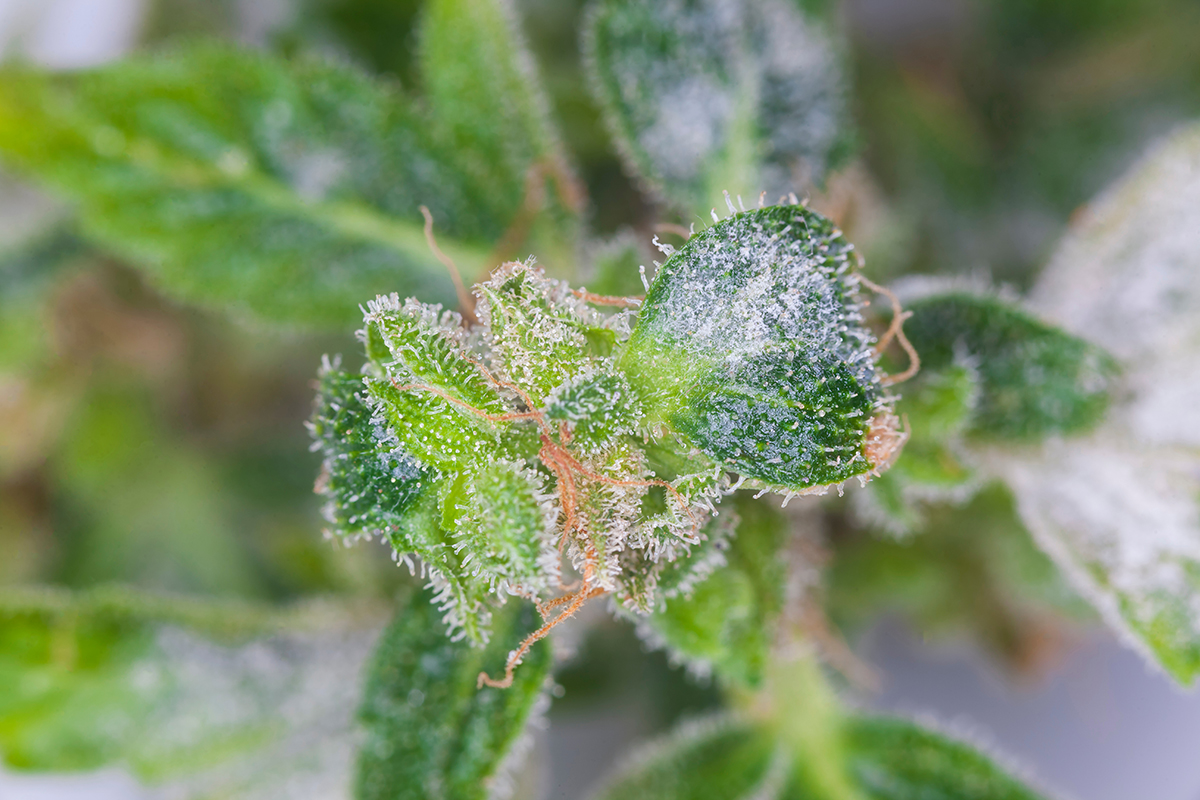Select Your Country/Region
Current Region:
 USA (EN)
USA (EN)
Choose a different country or region to see the content specific to your location
Moldy cannabis is unsafe to consume and can be harmful to your health. Whether you’re a seasoned consumer or new to cannabis, knowing how to identify moldy weed is crucial for your safety.
Here’s what to look for:

Mold on cannabis can appear in different forms, often mimicking natural trichomes or resin. Here’s what to look for:
Mold often appears as fuzzy or powdery spots in shades of white, gray, or even blue-green. This can resemble a spider web or fine cotton strands. If you observe what appears to be dust or fine, hair-like strands on your cannabis, conduct a thorough inspection to determine whether mold is present. White powdery mildew, for example, often grows on the surface of cannabis buds.
You might notice irregular dark spots or areas that look darker than the surrounding bud. This is often a sign of mold or mildew growth. Bud rot (a common type of mold infection in cannabis) appears as black or brown discoloration on the flowers, which may spread to other areas of the plant.
Moldy cannabis typically has a musty, mildewy, or earthy smell. It may resemble damp clothes left out too long or a moldy basement. This smell is different from the natural skunky, sweet, or citrus aroma of healthy cannabis.
If you smell a musty odor when inspecting your buds, discard the cannabis immediately. The mold may have already compromised the overall quality and safety of the product.
White powdery mildew is the most commonly seen type of mold. Cannabis plants can be susceptible to several other types of mold types, including:
Moldy weed can be prevented with proper care throughout the cultivation, drying and storage process. Here’s what you can do to keep your cannabis mold free:
Cannabis should be dried and cured in a controlled environment to prevent moisture buildup. Avoid drying cannabis in overly humid or poorly ventilated areas. The drying process should be slow and steady, ensuring that the buds are not left too wet or exposed to excess moisture.
Store your weed in airtight containers with humidity packs to maintain an optimal relative humidity (RH) between 55-62%. Mason jars are an excellent choice for storing cannabis. They help regulate humidity and keep cannabis safe from mold spores.
Keep cannabis in a cool, dark place to prevent mold growth. High temperatures and sunlight can cause the cannabis to degrade more quickly. Store cannabis in a temperature-controlled area away from heat sources.
Always check your cannabis for visual signs and smell before consuming. This can help you catch mold early, reducing the risk of inhaling harmful mold spores. Breathing in mold spores can cause lung infections or respiratory issues.
While moldy cannabis may seem harmless, smoking it can lead to serious health issues, particularly for those with compromised immune systems. Inhaling mold spores can cause allergic reactions. Moldy weed can also introduce mycotoxins. These are toxic compounds produced by certain molds that can be harmful when consumed over time.
If you accidentally smoke moldy weed, you may experience symptoms such as coughing, wheezing, and throat irritation. In some cases, people with more severe allergic reactions could experience shortness of breath or asthma-like symptoms.
If you find mold on your cannabis, it’s best to dispose of it rather than risk your health. Mold removal techniques like washing the buds or removing visible mold are not effective and do not eliminate the danger of consuming mold spores.
Once cannabis has been contaminated with mold, it is no longer safe to smoke, and the only option is to dispose of it properly.
Mold on cannabis is a serious issue and can significantly compromise the quality and safety of your weed. Whether you’re storing cannabis long term or purchasing cannabis products, always inspect for signs of mold before use.
By maintaining the right storage conditions, controlling humidity, and inspecting cannabis regularly, you can keep your weed mold-free and enjoy it safely.